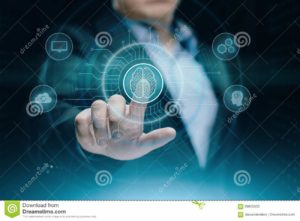Technically Speaking by dave trecker
 Technical advances are coming so fast we tend to take them for granted. Smart and smarter phones. Self-driving cars. Personalized medicine. Drones and robots everywhere. Yet that’s just the beginning. Borrowing from Bachman-Turner Overdrive, “You ain’t seen nothin’ yet.” Take urban living, our cities, even the greater Naples area, will look very different 15 or 20 years from now.
Technical advances are coming so fast we tend to take them for granted. Smart and smarter phones. Self-driving cars. Personalized medicine. Drones and robots everywhere. Yet that’s just the beginning. Borrowing from Bachman-Turner Overdrive, “You ain’t seen nothin’ yet.” Take urban living, our cities, even the greater Naples area, will look very different 15 or 20 years from now.
Here are some of the things we can expect:
• Commercial buildings and some residential ones will have solar converters built into their windows and all roofs will be covered with solar tiles. As a result, buildings will generate their own power – electricity, lighting, cooling – and thin-line batteries will store excess energy during the day and resupply it at night.
• Buildings will do other things as well. Now being piloted in New York, high-rises will have exteriors clad with air purifiers activated by sunlight to keep outer surfaces clean. No more window cleaners hanging high above the street.
• And many buildings will be green, literally. “Biophilic” designs will offer mid- and high-rises cloaked with plants and trees built right into the structures. Hotels are experimenting with this, and residential units have gone up in Milan and Singapore.
• Urban farms will also be commonplace. Vertical warehouses in the middle of cities will use LED lights and automated irrigation to grow everything from peas to lettuce to avocados. Using stackable soil-free trays, 16 acres of food will be grown on a floor measuring an eighth of an acre, then delivered to a supermarket right around the corner.
• What about transportation? That’s changing too. Car ownership will be a thing of the past. Instead, people will share or rent vehicles as they need them. Just-on-time autonomous car pickup and delivery will take you to and from the grocery store or pharmacy. Forget about oil changes or parking spaces. Those were grandpa’s problems.
• Self-driving shuttles will bring people from the suburbs to city center, where autonomous buses and driverless taxis will take them to their destinations, all based on voice commands. GPS-connected traffic sensors will find the fastest routes, and there will be green bonuses. With fewer cars, streets will be narrower and landscaped sidewalks will be wider and more walkable. Where will this happen first? Here, in warm climes like South Florida.A Wall Street Journal report says driverless cars have fewer issues where there’s no snow.
• Rapid transit will be a part of the change. Boston is looking at high-speed monorail, and Paris will have underground connections to most suburbs completed by 2025. More exotic are pneumatic tubes to move people rapidly from city to outlying areas – airports, sports facilities, factory complexes. And for the truly adventurous, get ready for unmanned aerial cars –Uber taxis with wings – now under development in France.
• How we buy things – the whole retail picture – is changing as well. Online purchase and home delivery, already commonplace, will take on a new look. Expect drones to deliver pizza and medicine right to your door, as well as clothes on approval. If the clothes don’t fit, send them back by drone.
• Where we live is also changing. Micro apartments will be an option for city dwellers. Centrally located, with 300 to 600 square feet of living space, they may be just the ticket for low and medium-salaried urban workers. A Tampa developer was flooded with requests when he announced plans earlier this year for 120 micro apartments.
• Then there is artificial intelligence. Huge strides in AI have enabled everything from urban storm predictions (piloted in China) to by-the-minute traffic control (tested in Pittsburgh). For some time now, AI-based robots have assembled cars and operated warehouses. More recently they have been used to count cash in retail stores. Some 7,000 Target and Walmart outlets use robots, which will soon take over sorting and shipping functions and, eventually, inventory control. Futurists say by 2030, maybe sooner, all hands-on retail work will be done
by robots.
• But these changes all pale compared to quantum computing. Unknown to most, quantum computing draws on the principles of quantum mechanics, using multistage systems to speed problem-solving almost exponentially. IBM has a supercomputer that can perform 200,000 trillion calculations per second. The Chinese are developing a model capable of performing 1 million trillion calculations per second by 2020.
What will that mean for community life? A redesign of everything from roads and beaches to water supplies and energy sources. Plans will be crafted and instantly updated based on growth patterns, demographics, even climate change. Health will be continuously monitored, directing personalized medical treatment. In more
ways than we can now imagine, our lives will be managed by supercomputers.



Leave a Reply
Want to join the discussion?Feel free to contribute!